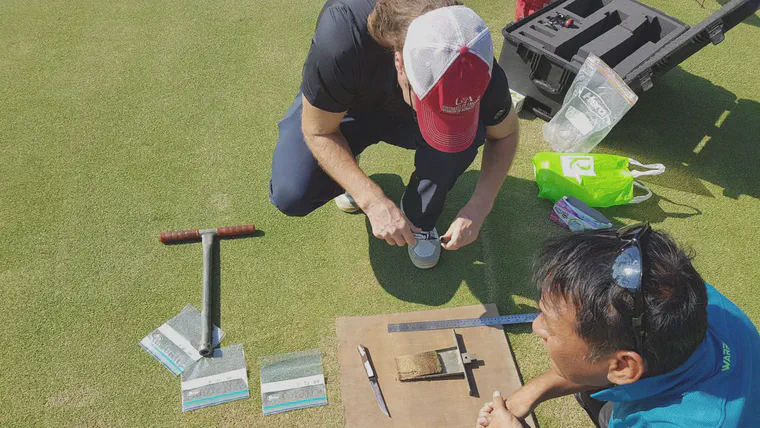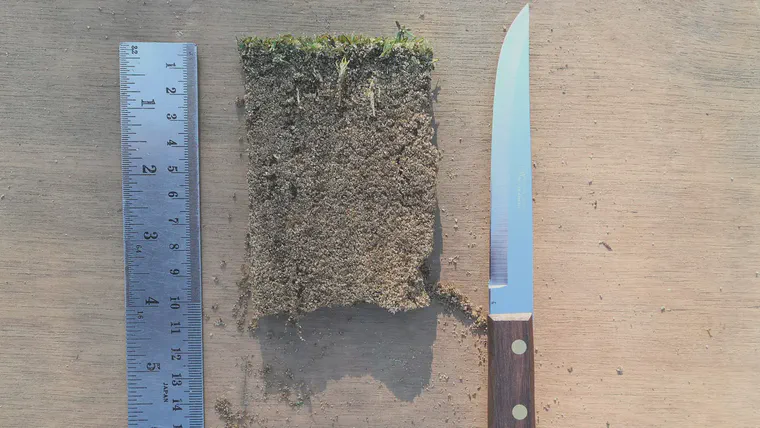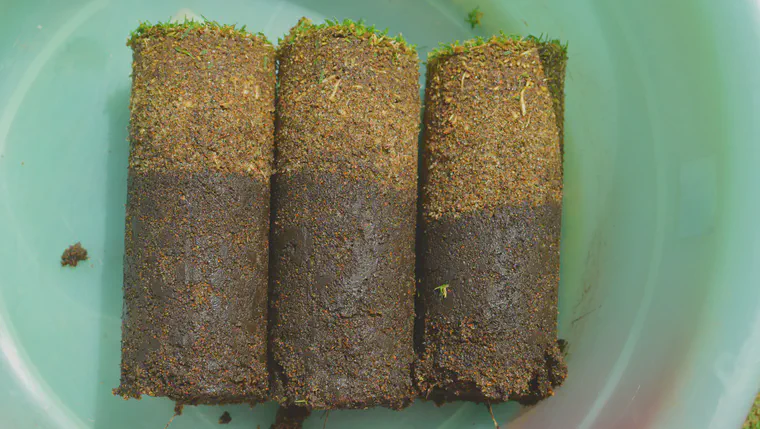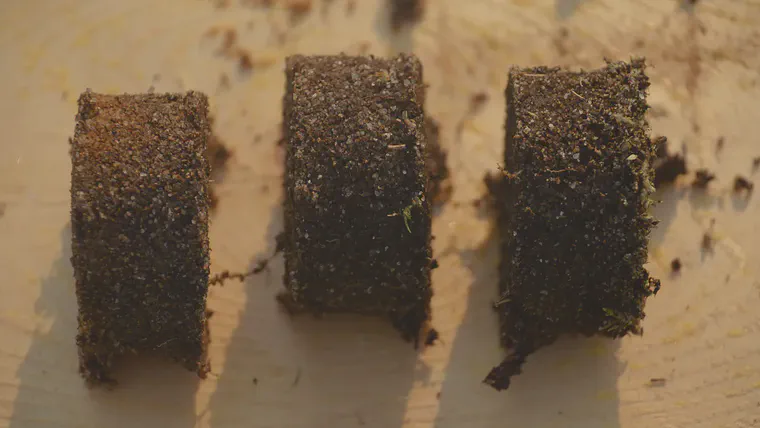My preferred method of OM246 sample collection

I’ve collected a lot of soil samples for total organic matter testing by depth. That’s what I call OM246 testing. My preferred method for this is to use a straight (no taper at the tip) cylinder to pull the core. I remove the core from the cylinder, place it on a flat surface, line it up with a ruler or measuring tape, cut the core at specific depths, and place the 0 to 2 cm, 2 to 4 cm, and 4 to 6 cm segments into pre-labeled bags.
The OM246 Sampling Instructions document describes how I recommend collecting these samples.
A colleague wrote with this inquiry:
I know you use a 1" pipe [1 inch, or 2.54 cm—to be exact I generally use a 3 or 4 cm pipe] for your OM246 samples. Do you see any objection to using a soil profiler? I’ve convinced the lab here at [..] to start doing the OM246 test by the way. Just took the first samples today from [..]. We tried to use a solid pipe but it was impossible to get the core out without damaging it. We went with the profiler instead. Thoughts?
My answer was “Fine, I have used a profiler. No reason that won’t work perfectly well.” I’ll elaborate a little on why I prefer a cylindrical sampler, even though I have used a soil profiler to collect samples too.

I find it easier to cut a small (3 or 4 cm diameter) cylinder at exact depth by hand. When I first started collecting these samples, I thought a soil profiler might pull the type of sample that was even easier to cut at depth. After trying a lot of different sampling methods, I found my preference was a cylinder.
I prefer to collect samples with a tool that does not have a tapered tip. Standard soil samplers and many soil profilers have a tapered tip. When I look at these cores or profiles, they have been compressed through the tapered bit of the tool and then the samples expand after passing through the taper. I don’t think this taper makes a huge difference in the depths at which a sample is cut, but it’s something I worry about in the back of my mind, thinking the depth may be off by a mm or two because of the decompaction of the sample.
My take home message is to take the samples with whatever tool is easy for you to use, and with a tool that makes it easy for you to cut the sample at a specified depth.

